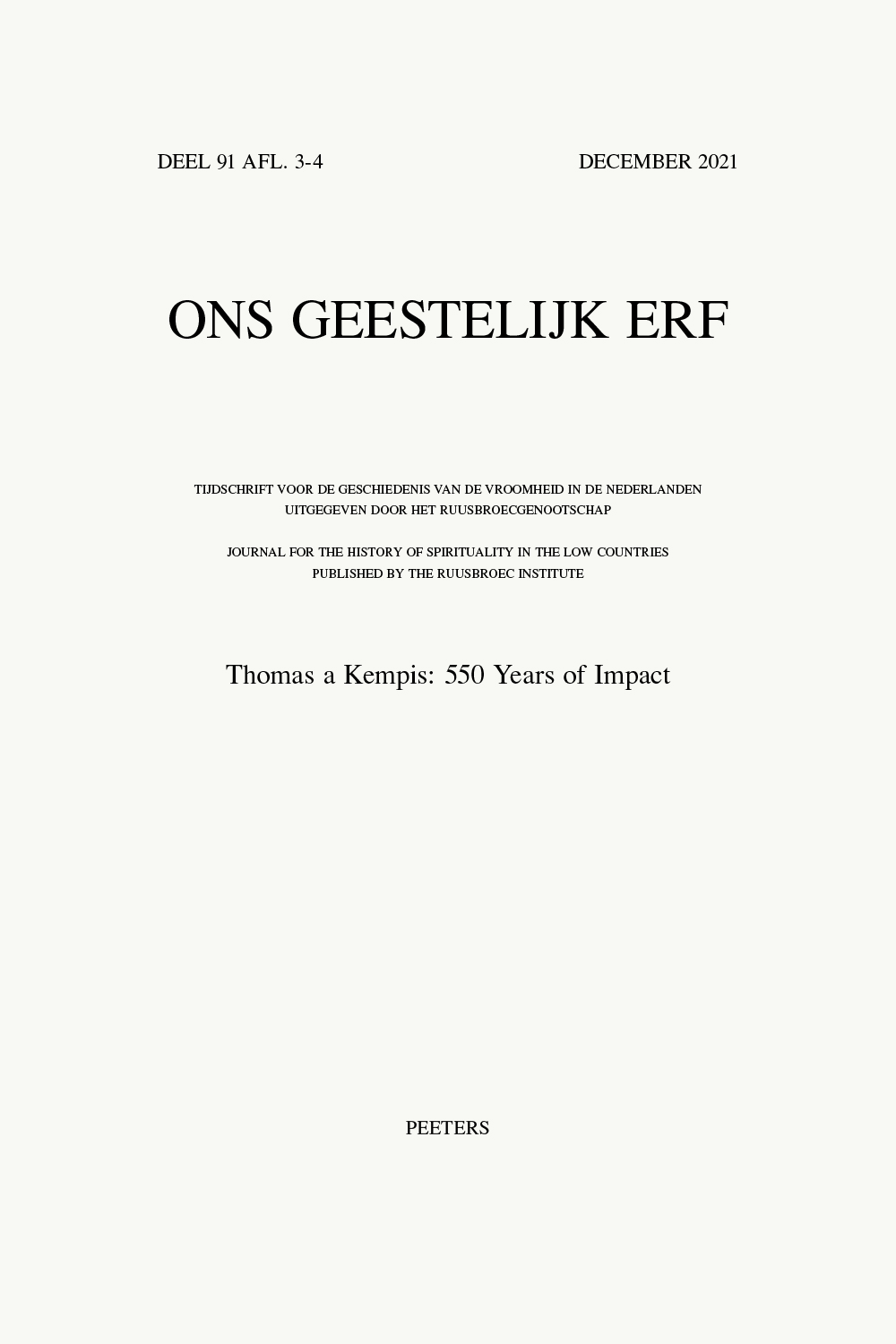 previous article in this issue previous article in this issue | next article in this issue  |

|
Document Details : Title: Waer een steen so breet dat hi al eertrijck besloech Subtitle: Suso's allegorie van de steen in volkstalige en Latijnse teksten in de vijftiende-eeuwse Nederlanden Author(s): ROBBE, Joost Journal: Ons Geestelijk Erf Volume: 85 Issue: 3 Date: 2014 Pages: 176-194 DOI: 10.2143/OGE.85.3.3062092 Abstract : This article investigates the reception of Henry Suso’s allegory of the stone in the 10th chapter of the Horologium aeterna sapientiae (1331/34) in Latin and vernacular texts in the Netherlands in the 15th century. The allegory can be found in six different texts: Gerard of Vliederhoven’s Cordiale de quatuor novissimis, Dionysius of Rijkel’s De quatuor hominis novissimi, Henry Suso’s Horologium aeternae sapientiae, Ludolph of Saxony’s Vita Christi, Jan of Brederode’s Des coninx summe and a Haarlem ars moriendi. It is argued that the discrepancies between Suso’s original version and Vliederhoven’s and Van Rijkel’s Latin versions can only be explained by the influence of the Middle Dutch translation of the Horologium, whereby the transition from ‘zadeken’ (seed) to ‘zandeken’ (sand) in the Middle Dutch translation led to the introduction of a sand stone or sand mount in the versions of Vliederhoven and Van Rijkel respectively. In this way, the reception of Suso’s allegory in the Netherlands in the 15th century represents an illuminative example of how Latin texts could both influence and be influenced by vernacular literature. |
|
